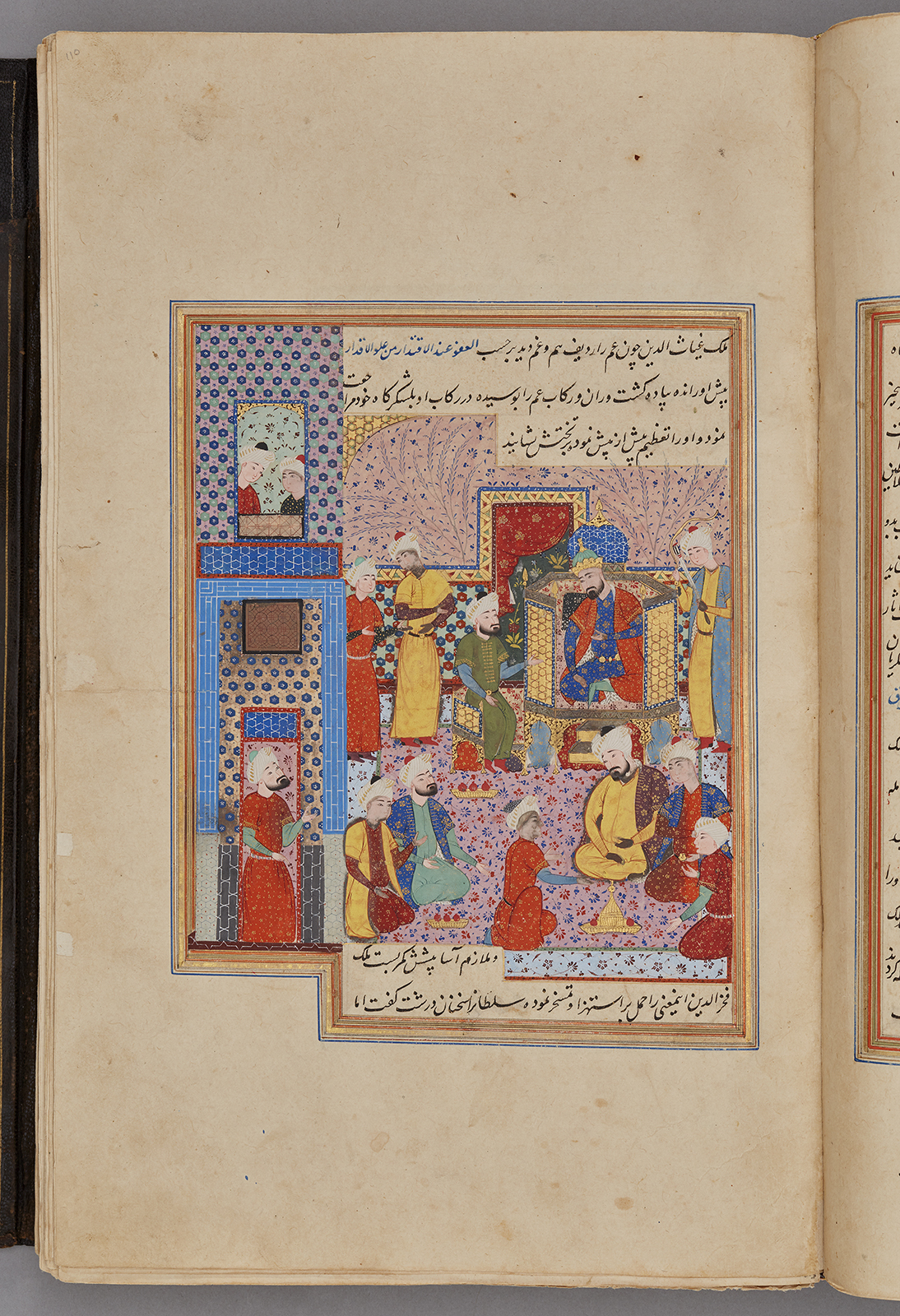Click on the image to zoom
Banquet at King Ghiyath al-Din’s Palace, Folio from a manuscript of Nigaristan
- Accession Number:AKM272.f110r
- Creator:Author: Ahmad b. Muhammad Ghaffari, Persian, died 1567 Scribe: Ahmad al-Shirazi
- Place:Iran, Shiraz (probably)
- Dimensions:38.7 cm × 25 cm × 6.4 cm
- Date:1573-74 CE/980 AH/AH 980
- Materials and Technique: Ink, opaque watercolour, and gold on paper
The miniature painting "King Ghiyath al-Din’s Palace" is from an intact manuscript of Kitab-i Nigaristan, a collection of anecdotes and historical incidents written in prose by the historian and scholar Ahmad Muhammad Ghaffari (1504–1567/68) of Kashan in 1551–2. This illustrated manuscript, dated 1573, was probably produced in a Shiraz workshop.
See AKM272 for more information about the manuscript and links to the other illustrations.
Further Reading
The setting of this illustration is a typical banquet scene, where a crowned figure sits on a throne and receives a guest who sits next to him. Attendants are standing by his side and, further down, another group kneels around food which is served as it has been in other banquet scenes: on the ground.
The text reveals that this is a reception held by King Ghiyath al-Din, Sultan of the Ghurid Empire from 1206–12. Ghiyath al-Din has invited a governor of Nayman to feast with him after the governor has attempted to undermine his rule. This moral story shows that an authority figure can show his power by forgiving the sinner.
Like other Illustrations in this manuscript, this image depicts both the interior of a room and a view of the space outside of the room. The composition of other indoor illustrations of Nigaristan follows this same formula and shares a similar division of space. Typically, the main room is situated between the two text boxes and the side scene is mostly occupied, as it is in this miniature, by the façade of the same room.
- Elika Palenzona-Djalili
Note: This online resource is reviewed and updated on an ongoing basis. We are committed to improving this information and will revise and update knowledge about this object as it becomes available.


